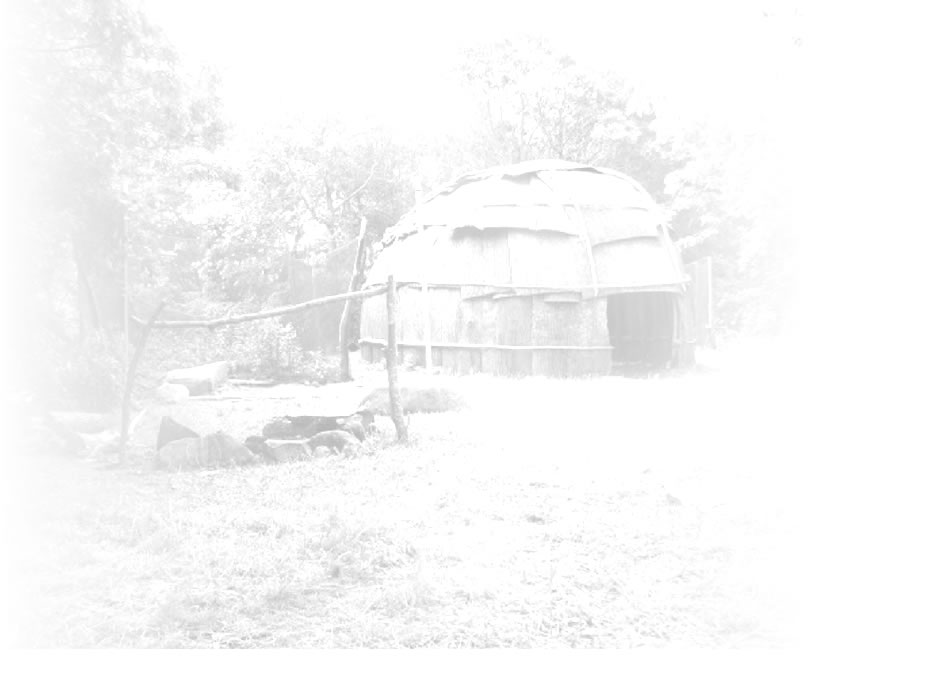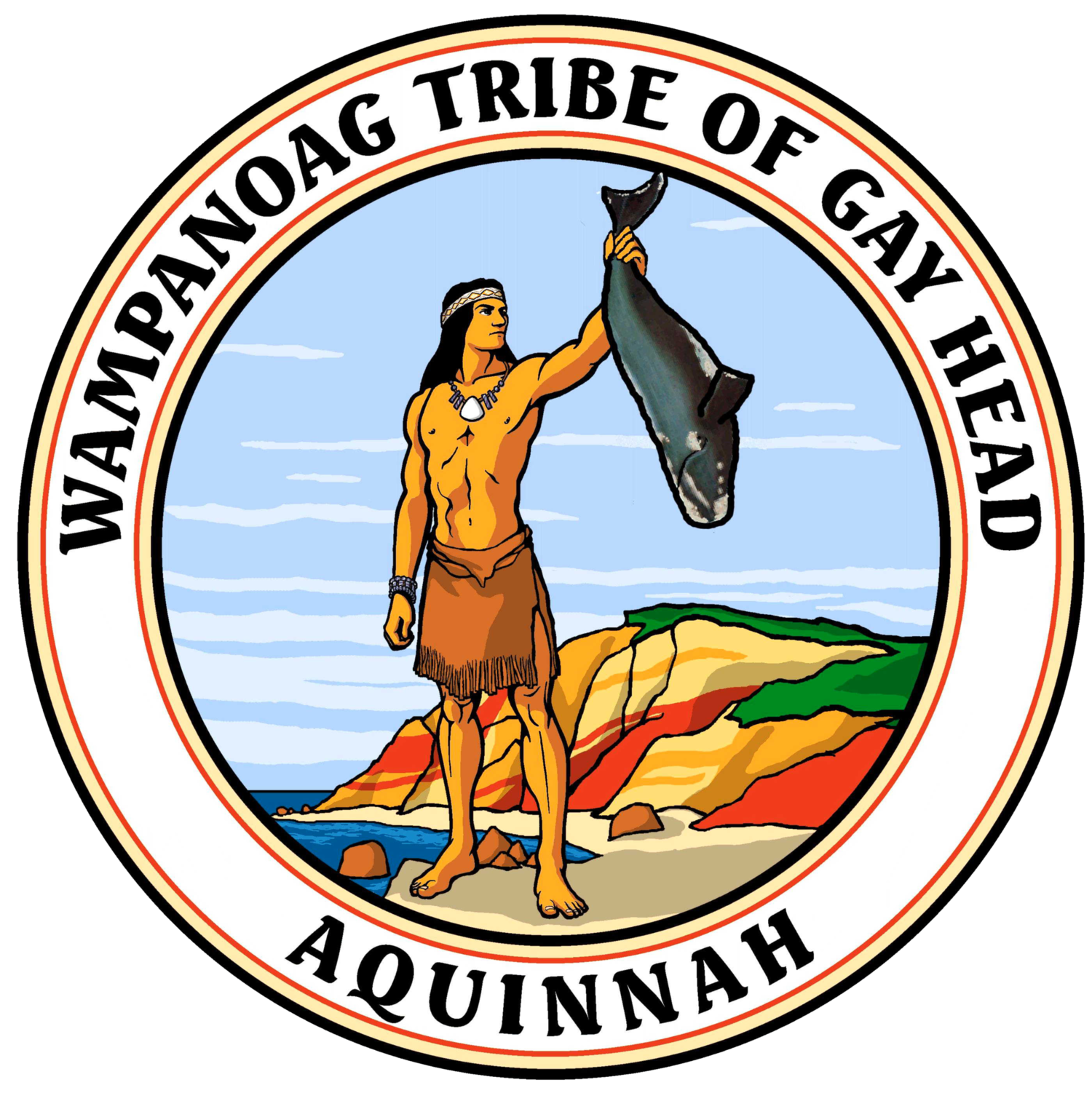
Wampanoag History
HISTORY of martha's vineyard
The last great North American glacier began its retreat some 10,000 years ago, leaving behind the accumulation of boulders, sand, and clay that is now known as Martha's Vineyard. There, it is said, a benevolent being named Moshup roamed the land. One day, Moshup was making his way across the mainland to the headlands of the Aquinnah Cliffs. Weary from his journey, Moshup dragged his foot heavily, leaving a deep track in the mud. At first, only a silver thread of water trickled in the track. But gradually, the ocean's force of wind and tides broadened and deepened the opening, creating an island named Noepe. The Wampanoag were the first people of Noepe.
The ancestors of Wampanoag people have lived for at least 10,000 years at Aquinnah (Gay Head) and throughout the island of Noepe (Martha's Vineyard), pursuing a traditional economy based on fishing and agriculture. The Aquinnah Wampanoag share the belief that the giant Moshup created Noepe and the neighboring islands, taught our people how to fish and to catch whales, and still presides over our destinies. Our beliefs and a hundred million years of history are imprinted in the colorful clay cliffs of Aquinnah.
Historical Background of the Wampanoag
For over ten thousand years the Wampanoag have inhabited the island of Noepe. When the first Europeans dropped anchor off our shores in the 1500s - just before the Pilgrims - we numbered three thousand or more. To this day we still occupy our aboriginal land of Aquinnah and count 901 members, about 300 of whom live on the Island.
The Wampanoag Nation once included all of Southeastern Massachusetts and Eastern Rhode Island, encompassing over 67 distinct tribal communities. The Wampanoag people have undergone a very difficult history after assisting pilgrims in the early 1600s. With the European settlers came much adversity for our tribe - disease that virtually wiped out whole villages, systems of government that bore little resemblance to our tribal practices and values, missionaries intent on converting us to Christianity, and private models of land use and ownership that conflicted with our tribe's own communal practices and values. The vast majority of these tribal communities were killed in battles initiated by colonists to secure land. Today, only six visible tribal communities remain. Mashpee and Aquinnah have maintained physical and cultural presence on their ancestral homelands. Linking these tribal communities through preservation efforts is essential for survival of the many cultural arts and traditions at risk of being lost.
AQUINNAH WAMPANOAG HISTORY & GOVERNMENT
The Aquinnah Tribe's ancestral lands have always been on the southwestern end of Noepe (Martha's Vineyard). After the arrival of the English, these lands became reduced in size. The area from Nashaquitsa Pond to the Cliffs became an Indian District, eventually governed by three tribal overseers. In 1870, over the unanimous objections of the Wampanoag Indian residents, the Town of Gay Head was incorporated. From the Wampanoag point of view, the principal effect of the incorporation of Gay Head was the alienation of Wampanoag Indian District Lands (reservation), which was in violation of the Federal Non-Intercourse Act of 1790. Because the Tribe controlled the Gay Head town government for more than a century since 1870, the effects of this alienation were largely obscured, and the integrity of the Tribal Common Lands seemed to be adequately protected. In 1972, however, in response to the growing potentiality for encroachment on Tribal Common Lands, the Wampanoag Tribal Council of Gay Head, Inc. (WTCGH) was formed to promote self-determination among Wampanoag people, to ensure preservation and continuation of Wampanoag history and culture, to achieve Federal recognition for the Tribe, and to seek the return of Tribal lands to the Wampanoag people.
The political identity of the Wampanoag Tribe has continued under the township's laws of the Commonwealth of Massachusetts, but over the past 50 years more and more Indian land has been lost as changes in the local economy have forced more Indians to move to other parts of the Island or to leave the Island altogether.
Aquinnah Wampanoag tribal members continued to be very active in town government, with the three town-elected selectmen positions filled by tribal members. In 1987, after two petitions and lengthy documentation, our tribe obtained federal acknowledgement by an act of the U.S. Congress. The U. S. government acknowledges and has taken responsibility for inequities to the tribe and granted partial restitution for land that was unjustly taken. In accordance with 1987 Settlement Act with the federal government there are approximately 485 acres of Tribal Lands purchased (160 acres private and approximately 325 acres common lands). The common lands include the Gay Head Cliffs, Herring Creek, and Lobsterville. Other land owned by the Tribe include parcels in Christiantown and Chappaquiddick. A master plan of Wampanoag Tribal Lands was developed in 1993 for approximately 160 acres of the Wampanoag Tribal Trust Land, comprising of parcels I, IIA, IIB, and III. The Master Plan followed several years of investigative efforts and illustrates the present vision of the future tribal community in Gay Head.
The Wampanoag Tribe of Gay Head (Aquinnah) and the Town of Gay Head entered into agreement in June of 1995 to jointly provide for the health, safety and welfare of persons on Tribal Lands by providing for the use of police, fire, and medical personnel and resources in the event of disaster, disorder, fire or other emergencies arising on Tribal Lands. The Town is working with the Tribe to make trained and experienced Public Safety Officials and personnel readily available on Tribal Lands to provide increased protection for persons and property on Tribal Lands, until such time as the Tribe can provide these services for its tribal members. The Tribe's Aquinnah Rangers are EMT certified and provide services for both Tribal Lands and the up-island communities.
In 1998, the name of the town was officially changed from Gay Head back to its former Wampanoag name of Aquinnah by the state legislature, representing recognition of Wampanoag history in the region. Traditionally, the Wampanoag people have been, and continue to be, self-reliant and independent, preferring hard work and subsistence to dependence on local, state or federal governments.
Today, the Wampanoag Tribe is governed by a Tribal Council, as was traditionally done. Our Tribal Council consists of a chairperson, vice chairperson, secretary, treasurer, and seven council members, all popularly elected. The Chief and Medicine Man are traditional members of the Tribal Council and hold their positions for life. Our Tribal Council is elected by enrolled members of our tribe to represent us in all tribal affairs.
The Wampanoag Tribal Council is a popularly elected representative tribal government, whose meetings are open to all members to encourage community involvement in all phases of community development. Community participation is further enhanced by general membership meetings, special meetings, public hearings, and, when appropriate, referenda such as the referendum called to approve the settlement agreement between the Tribe and the State and Federal Governments. The Tribal Council maintains communication with the General Membership of the Tribe through regular mailings, newsletters, and day-to-day interaction between Tribal members and Councilors. These means of communication were utilized to ensure participation by the general membership in the planning process for the Aquinnah Cultural Center.
Today, community values are still strong within our tribe. We proudly care for 477 acres of our ancestral lands, much of it set aside for common use and benefit. Land and resource management strategies rely on sustainable practices which are shared with other towns and conservation groups on the island. Traditional arts like beadwork, basket making, and pottery continue to be taught. Celebrations like Cranberry Day and The Legends of Moshup Pageant are held annually. The tribe has developed 27 units of affordable housing for families and elders. It now also owns and operates several businesses, including three stores and a shellfish hatchery. Our tribe continues to be self-governing and is taking great strides toward economic self-sufficiency. Even the Wampanoag language is being taught to tribal members. Through it all we have not forgotten who we are.
The influence of our tribe can be felt island wide. Environmental practices and values taught to the settlers long ago still help inform and maintain the island's pristine beauty. Roads which wind and bend across the island gracefully follow paths once worn smooth by our ancestors. Wampanoag place names pay homage to the earth's bounty. Everywhere on the Island are reminders of our Wampanoag heritage and community.
"To be Wampanoag is inside you. It's really something that you can be proud of."
--a tribal member

